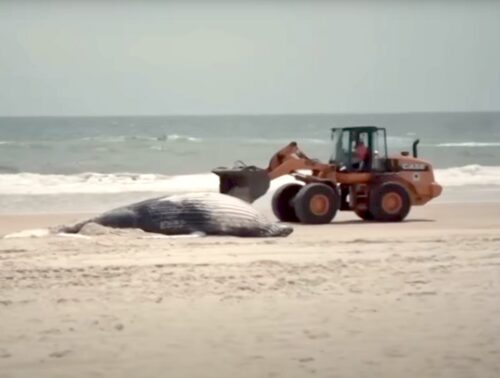 [[{“value”:”
[[{“value”:”
ENB Pub Note: Interesting article from American Greatness. As people realize that energy policies and regulations are based upon climate fearmongering rather than proven physics and fiscal responsibility, it will be harder to fund the “renewable” energy sector. We have been tracking the costs over the years, and “Turley’s Law” seems to have played out. The more money is spent on wind, solar, and hydrogen, the more fossil fuels will be used. Anywhere climate alarmism is used for increased wind, solar, and hydrogen, energy prices have skyrocketed. We are watching the economies of the EU, Germany, the UK, California, Delaware, New Jersey, and New York follow a similar pattern. Deindustrialization follows and a fincaial collapse. Regimes change when people do not have access to low cost energy.
Here are ten ways environmentalism has been misused, causing either no benefit or real harm to the environment.
The first Earth Day was organized in 1970 in response to growing public concern for the environment. Many of these concerns were entirely justified. [emphasis, links added]
In 1969, for example, an oil slick along an industrialized stretch of the Cuyahoga River in Ohio caught fire, generating national awareness of the need to reduce water pollution.
Similarly, in coastal cities in California, most notably in Los Angeles, the exhaust from unleaded gasoline created air pollution so dense you couldn’t see the hills a few miles away.
We’ve come a long way in 51 years.
This month, as Americans celebrate Earth Day on April 22, we are challenged to differentiate between legitimate environmental priorities and those priorities chosen for us by special interests with ulterior motives for whom environmentalism is a sentiment to be manipulated.
Here are ten issues where environmentalism has been misused, with consequences that have either been of no benefit whatsoever to the environment or have even caused harm.
(1) We are in a climate crisis
We may as well begin with the most controversial environmentalist claim, that our planet is at imminent risk of catastrophic climate change. The problem with this claim is two-fold.
First, there remains vigorous—if suppressed—debate over whether the data actually supports this claim. There is ample evidence that average global temperatures are not rapidly increasing, if they are even increasing at all.
There is also strong evidence that extreme weather events are not increasing but rather that our ability to detect them has improved and that population increases have led more people to live in places that are particularly vulnerable to extreme weather.
Second, even if there is some truth to the claims of climate catastrophists, it is not possible to precipitously transform our entire energy infrastructure. The technology isn’t ready, the funding isn’t available, and most nations will not participate.
Adaptation is our only rational course of action.
(2) There are too many people
Based on extrapolations back in 1970, this may have appeared to be the case because populations worldwide at that time were rapidly growing.
Even in those nations that continue to experience rapid population growth, the rate of growth is following the same pattern of decline.
But today, in almost every nation, the inverse is now true: birthrates are well below replacement levels.
Even in those nations that continue to experience rapid population growth, the rate of growth is following the same pattern of decline. The United Nations now estimates the total global population to top out at around 10 billion people, after which it is projected to decline.
This means the rapid population growth we’ve seen over the past two centuries, where the global population octupled from 1 billion in 1804 to over 8 billion by 2024, is over.
There is not one trend anywhere on earth that contradicts this pattern. Humanity faces a future of too few people, not too many.
(3) We are running out of “fossil” fuels
While this is technically correct, the situation is nowhere close to what was famously predicted in 1956 by American geologist M. Hubbert, who claimed oil production in the U.S. would peak by 1970 and then slide into permanent decline.
In the U.S. and around the world, new technologies and discoveries have put total reserves of oil, along with natural gas and coal, at record highs despite increasing demand.

According to the authoritative Statistical Review on Global Energy, based on current consumption, proven reserves could supply oil for 61 years, natural gas for 50, and coal for 208.
This grossly understates the big picture, however, because proven and recoverable reserves are being expanded all the time. “Unproven” reserves, waiting to be discovered, will easily double the amount of time left.
This doesn’t mean we shouldn’t continue to research new sources of energy. But we have a century or more to sort this out.
(4) Biofuels are renewable and sustainable
Nothing could be further from the truth.
Biofuel will never supply more than a small fraction of our energy requirements, and attempts to scale it beyond a niche product have produced catastrophic results.
Just to use California as an example, the current yield of ethanol from a corn crop stands at not quite 500 gallons per acre. Californians consumed 13.6 billion gallons of gasoline in 2023.

Since ethanol has 33 percent less energy per gallon than conventional gasoline, that means replacing gasoline with carbon-neutral ethanol would require 20.3 billion gallons of ethanol production, which in turn would require 63,400 square miles of irrigated farmland and over 120 million acre-feet of water per crop.
To put this in perspective, California’s entire expanse of irrigated farmland only totals around 14,000 square miles, and California’s entire agricultural sector only consumes around 30 million acre-feet of water per year.
Worldwide, biofuel crops already consume an estimated 500,000 square miles while only offsetting two percent of the global consumption of transportation fuel.
(5) Offshore wind energy is renewable and sustainable
Absolutely not. Wind turbine blades, on land or offshore, routinely kill raptors, condors, and other magnificent endangered birds, along with bats and insects. Offshore, there are additional harmful impacts.
Electromagnetic fields from undersea cables produce birth deformities in marine life and produce magnetic fields that disrupt the orientation abilities of some fish. Their low-frequency operational noise disrupts sounds made by fish for mating, spawning, and navigating.

The turbines “increase sea surface temperatures and alter upper-ocean hydrodynamics in ways scientists do not yet understand” and “whip up sea sediment and generate highly turbid wakes that are 30-150 meters wide and several kilometers in length, having a major impact on primary production by phytoplankton, which are the base of marine food chains.”
California’s official plan is to install 25,000 gigawatts of offshore wind capacity in floating wind farms 20 miles offshore.
At 10 megawatts each, California’s treasured marine ecosystem will be disrupted by the presence of somewhere between 2,500 floating wind turbines, each one nearly 1,000 feet high.
They will need 7,500 tethering cables descending 4,000 feet to the seafloor, along with 2,500 high-voltage cables.
Expect ratepayers and taxpayers to subsidize a project that could cost $300 billion or more to build systems that may only have a lifespan of 10-20 years.
Read rest at American Greatness
The post The Top Ten Environmentalist Myths appeared first on Energy News Beat.
“}]]
